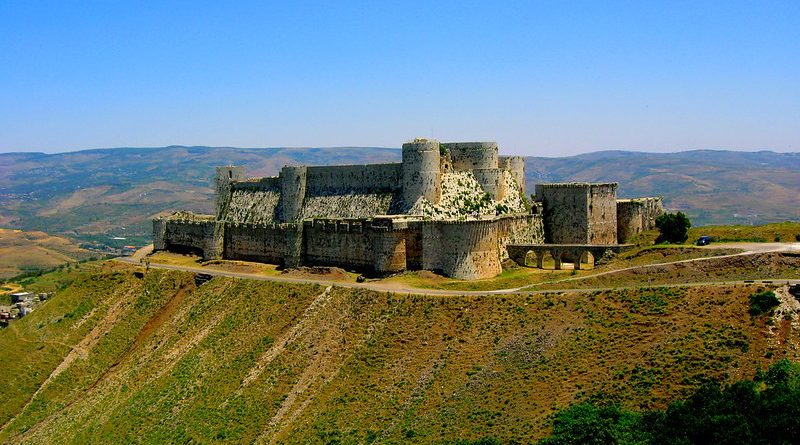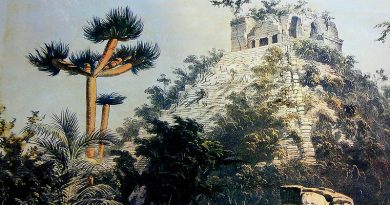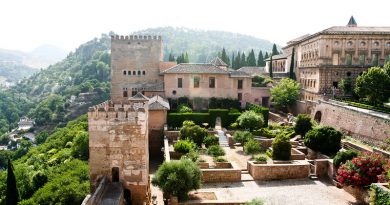Krak Des Chevaliers
On a Syrian hill over 2,000 feet high sits the Krak des Chevaliers – one Ancient History’s most distinguished medieval crusader castles. The Krak des Chevaliers had been previously known as the “Castle of the Kurds” as it was first inhabited by the group in the 11th century. The castle fell into control of the Knights Hospitaller in 1142, but was then seized by Baibars Mamluk, Sultan of Egypt, in 1271.
The Knights Hospitaller endured heartbreak familiar to what the Apamean people experienced in 115 AD. An earthquake hit in 1170 which damaged the castle they had been working on since 1140. However, through construction in the years to come, the castle acquired what it became most famous for – its concentric structure. The Krak des Chevaliers, a concentric castle, has two walls that completely surround the exterior of the castle. This design enabled maximum protection from outside invaders and also served as a major influence for subsequent castle design. The Krak des Chevaliers is considered a spur castle because the (elevated) location is considered a defence mechanism in itself. In its prime, the massive castle hosted 2,000 soldiers.
The Krak des Chevaliers’ history seems to have set an all-too ominous precedent for its current status. The ongoing civil-war has turned Syria’s major historic landmarks into the leading targets for attacks, looting, and also troop base locations. In a tragic twist of irony, the Krak des Chevaliers, once extolled for its remarkable preservation, has fallen into a realm of destruction. The crusader castle T.E Lawrence knew as “the best preserved and most wholly admirable in the world” is beginning to fall to the ground at the hands of Syria’s government and rebel forces.
On March 20, 2014, the Syrian government recaptured the Krak des Chevaliers from rebel forces.
The recent damage to Syria’s most cultured and historic sites is a true shame, especially considering the country is home to six UNESCO World Heritage Sites. The Krak des Chevaliers received the esteemed title in 2006.
Despite suffering apparent damage, the Krak des Chevaliers’ fight and stability in light of the modern raids is true testament to the strength of the crusader castle and the depth of its construction. Even modern buildings close to the castle have suffered substantial damage.
Raids in 2014 on the Krak des Chevaliers offer a skewed glimpse of how the crusader castle appeared during its historic prime. Nevertheless, the glimpse is unwarranted and the Syrian conflict is something that must cease before the country is left without any historical culture to look back on.
Further Reading:
Syria Crusader castle Krak des Chevaliers has war scars
Castles and Palaces of the World. Krak des Chevaliers
A Night Flight from Krak des Chevaliers
UNESCO. Crac des Chevaliers and Qal’at Salah El-Din.
Wikipedia. Krak des Chevaliers
By Morgan Lamb




